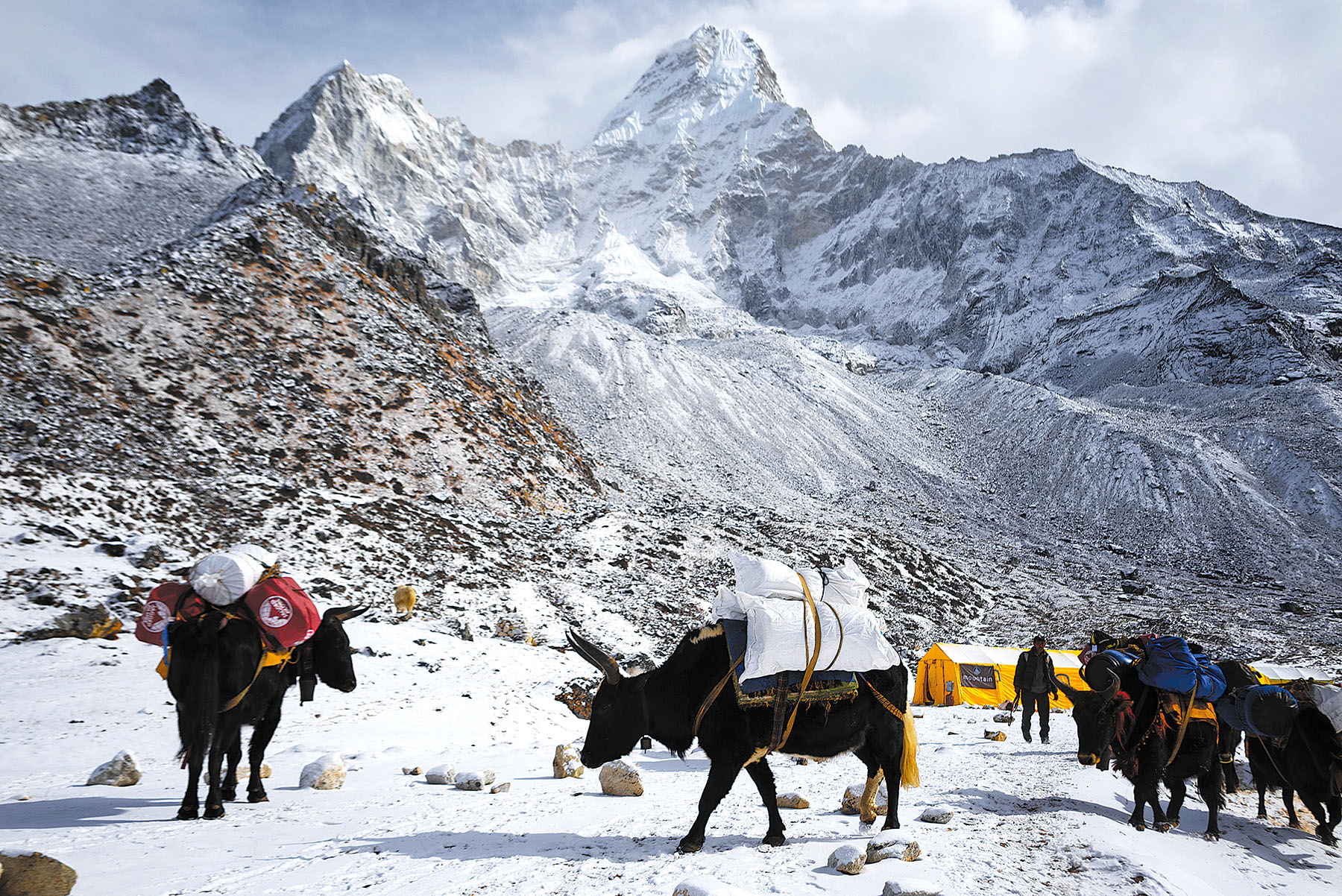
Nepal has sharply increased the climbing permit fees for Qomolangma, which is also known as Mount Everest in the West, and introduced a slew of measures aimed at controlling garbage pollution and preventing accidents on the planet's tallest peak.
Under the revised rules, every two climbers must hire a guide to climb any mountain over 8,000 meters, including Everest.
The revisions were approved in the Cabinet meeting on Jan 8 and published in the Nepal Gazette earlier this month.
Under the revised mountaineering regulations, the royalty fee for foreigners climbing Everest from the normal south route in the spring season (March to May) has been raised to $15,000 from the current $11,000 per person.
READ MORE: Nepalese Sherpa, 18, breaks 14-peak youngest record
The autumn season (September to November) climbing fee has increased from $5,500 to $7,500. At the same time, the permit cost per individual for the winter (December to February) and monsoon (June to August) seasons has risen from $2,750 to $3,750.
The new rates will take effect on Sept 1, 2025.
The last royalty fee revision was made on Jan 1, 2015, when the government switched from a group-based system to a uniform fee of $11,000 per climber for the spring season from the normal route.
For Nepali climbers, the royalty fee for the normal route during the spring climbing season has doubled from 75,000 to 150,000 Nepalese rupees ($540 to $1,080).
Climbing permits, previously valid for 75 days, will now be limited to 55 days. The reduced validity is aimed at streamlining climbing activities.
"Bookings already confirmed for the spring 2025 expedition will not be affected by this change," said Indu Ghimire, a joint secretary at the tourism ministry.
According to Ghimire, the regulations have focused on garbage management, social security for high-altitude workers, and boosting government revenue.
As per the amended rules, from the upcoming spring season, Everest climbers will be required to bring their poop back to base camp for proper disposal. Climbers must carry biodegradable bags to collect waste in the upper reaches.
Base camps typically have designated toilet tents with barrels to collect human waste during expeditions. However, in higher camps, only a few agencies provide similar facilities, while others rely on pits. Very few climbers use biodegradable bags to transport waste from the summit.
Last spring, the local government of Khumbu Pasang Lhamu Rural Municipality enforced the use of biodegradable waste bags as part of its initiative to address the garbage issue. It sold 1,700 poop bags. This initiative has now been mandatory for climbers scaling peaks over 8,000 meters.
Mandatory waste collection is part of a broader effort to address environmental degradation in the Everest region.
Climbers have long relied on unsustainable practices, accumulating garbage, including discarded oxygen canisters, abandoned tents, food packaging, and human waste in one of the world's most iconic places.
Such practices have tarnished the region's natural beauty and created health hazards for local communities.
According to the new rules, climbers are barred from carrying items not listed in their permit documentation issued by the tourism authorities.
Paragliding is permitted from mountains above 8,000 meters but only during descents and with prior authorization.
The government has also hiked the insurance coverage for high-altitude workers.
Insurance coverage for high-altitude guides has gone up to 2 million Nepalese rupees from 1.5 million Nepalese rupees, and for base camp workers, it has been raised to 1.5 million Nepalese rupees from 800,000 Nepalese rupees.
Little recognition
The increased insurance coverage aims to provide better security to the Sherpas and other support staff who take on big risks while helping the climbers. These workers often face harsh conditions and receive little recognition or protection despite their indispensable contributions to successful expeditions.
The amended rules have permitted rescue teams and cleaning campaign members to collect garbage and dead bodies up to Camp IV of Everest without paying fees.
They, however, have been barred from venturing into the death zone without a permit.
ALSO READ: Major clean-up campaign hopes to rid Qomolangma of 10,000kg trash
During last year's spring climbing season, 421 permits were issued for fee-paying individuals. Around 600 climbers, including 200 foreigners, reached the summit, with nearly 2,000 people assembling at the base camp. Eight climbers lost their lives, and the expeditions generated an estimated 100 metric tons of waste.
The Sagarmatha Pollution Control Committee reported collecting 85 tons of waste from the Everest region during the spring climbing season 2024.
This included 27.99 tons of burnable garbage, 7.51 tons of recyclable waste, 27.53 tons of human waste, and 14.15 tons of kitchen waste. Additionally, the Nepal Army removed over 11 tons of garbage.
According to experts, the alarming volume of waste collected each season underscores the urgent need for sustainable mountaineering practices.
Climate change exacerbates the waste problem by melting snow and ice, exposing previously buried garbage and human remains.


